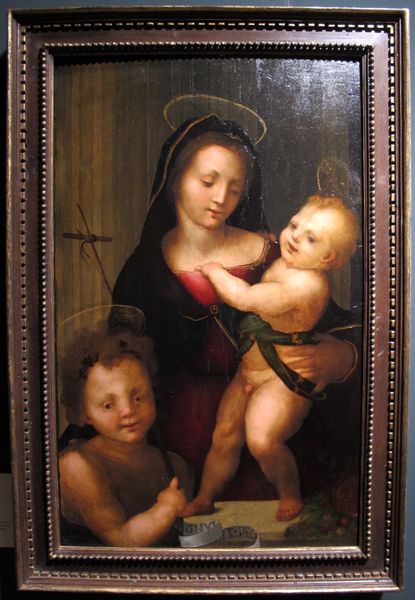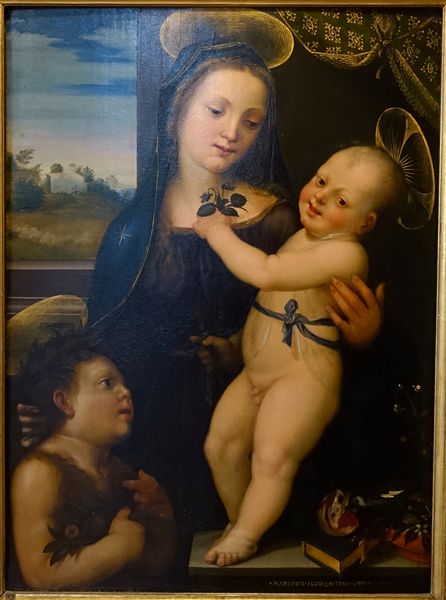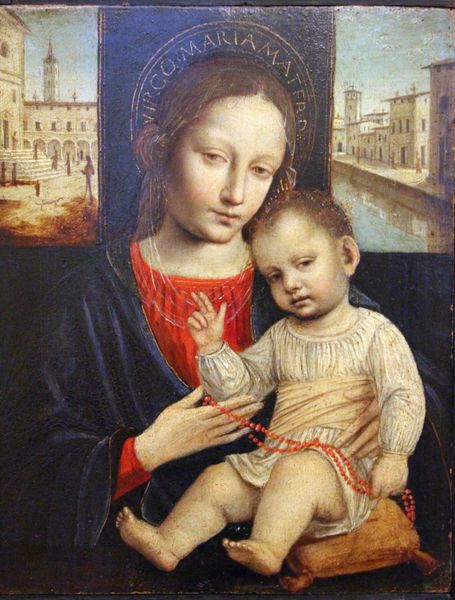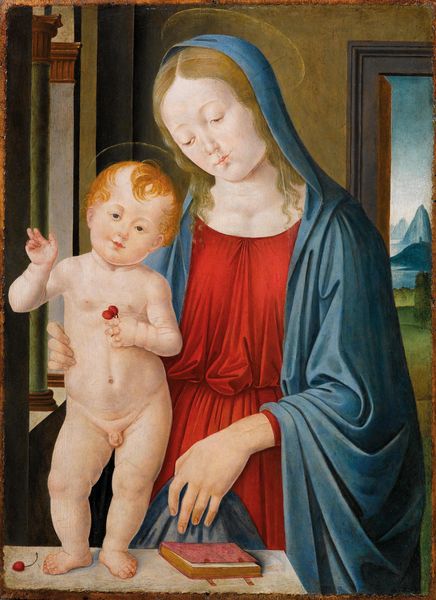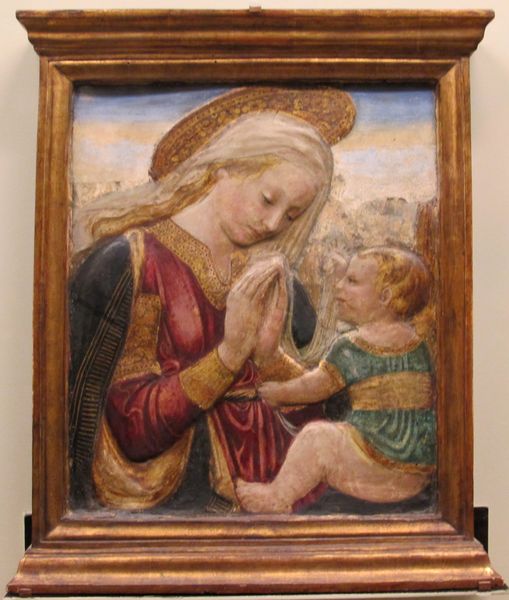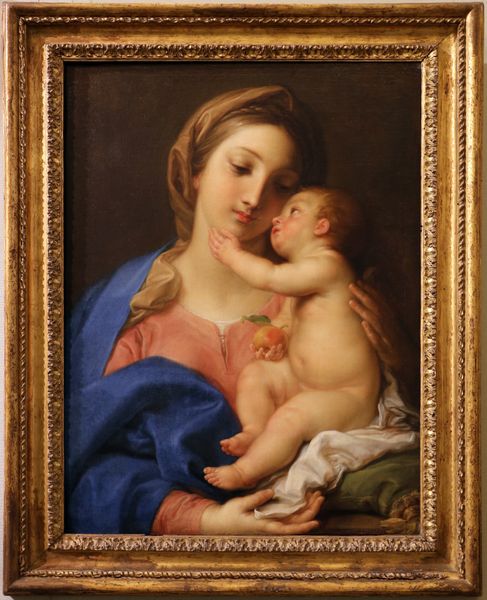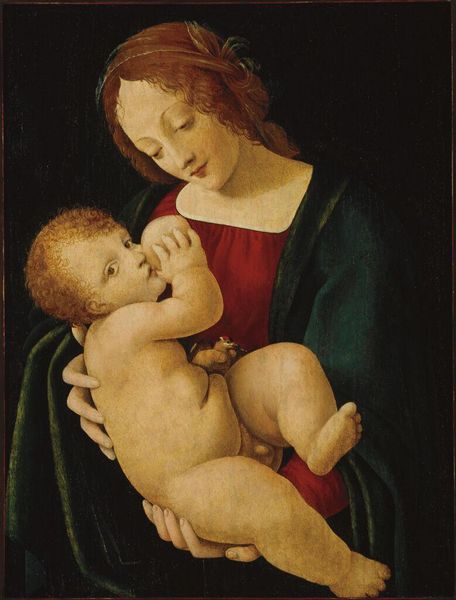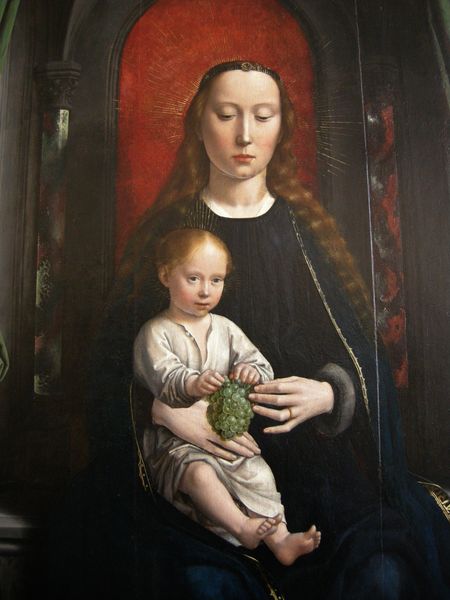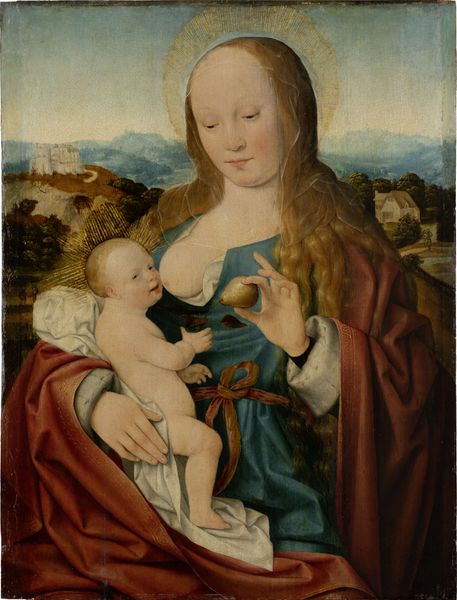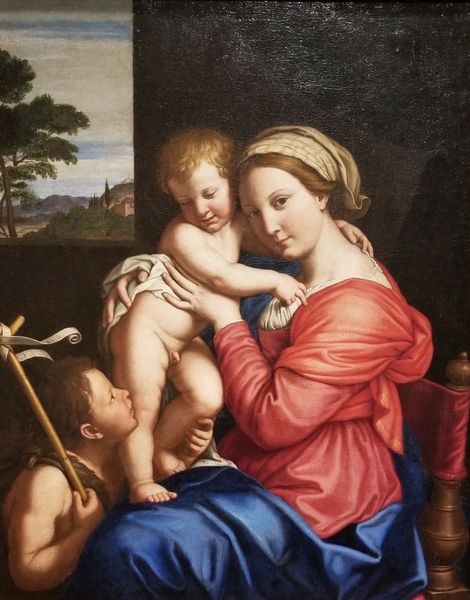
oil-paint
#
portrait
#
gouache
#
oil-paint
#
figuration
#
oil painting
#
history-painting
#
italian-renaissance
#
portrait art
Copyright: Public domain
Art Historian: Before us stands "Madonna col Bambino" painted around 1525 by Quentin Matsys, a Netherlandish Renaissance artist. It is currently housed in the Louvre Museum. The composition depicts the Virgin Mary holding the infant Jesus, within a domestic interior setting. Curator: Immediately, I'm drawn to the contrast of textures. The smoothness of their skin is really set off against the folds of her heavy blue cloak and crisp white linen. I’m thinking about the kind of pigments Matsys would have had access to. Art Historian: Yes, the deep blues were certainly precious, derived from lapis lazuli, quite expensive and suggestive of status in a portrait of this kind during the time. What I find particularly interesting is how Matsys navigates the rising trend for Italian Renaissance aesthetics in Northern Europe. We see his effort to bring Italianate grace into his traditionally Netherlandish style. Curator: I'd be curious to know how much labor went into grinding those pigments, not just the lapis, but all of them. And the panel itself, the wood… the process of layering oil paint to achieve this kind of luminosity must have taken weeks, maybe even months! Think of the workshop hierarchies involved. Art Historian: The workshop would be the locus of production and display! Wealthy families or religious institutions were commissioning works like these. "Madonna col Bambino" likely served a devotional purpose in a private home, acting as a direct visual conduit to the divine and demonstrating the commissioner's wealth and refinement. We should consider what message they sought to convey through the piece’s subject and materiality. Curator: Looking closely at the fruit and bread at the bottom of the painting… the inclusion of those elements, so carefully rendered. It points towards more than mere decoration, certainly engaging themes about sustenance, wealth and the symbolism of sacrifice? Art Historian: Precisely, the bread and grapes certainly allude to the Eucharist and Christ's sacrifice. It demonstrates a trend in visual arts and its symbology representing and interacting with complex, often paradoxical religious views in an easily digestible scene. Matsys also masterfully blends the sacred with the domestic – an approachable, maternal Mary rather than a distant, regal figure. It allows for a more personal connection with the divine. Curator: Thinking about it from the material conditions – the expense, time, and the display of the art piece… it feels the elite family is trying to associate their status with God Himself. Art Historian: Exactly! Ultimately this painting represents the intersection of faith, economics, and artistic skill during the Renaissance. It embodies the way powerful families wanted to broadcast religious piety, underscore lineage, and demonstrate status. Curator: Seeing this makes me deeply appreciate how art making encapsulates not just the vision of one individual, but the coordinated efforts of many workers and patronage systems.
Comments
No comments
Be the first to comment and join the conversation on the ultimate creative platform.
